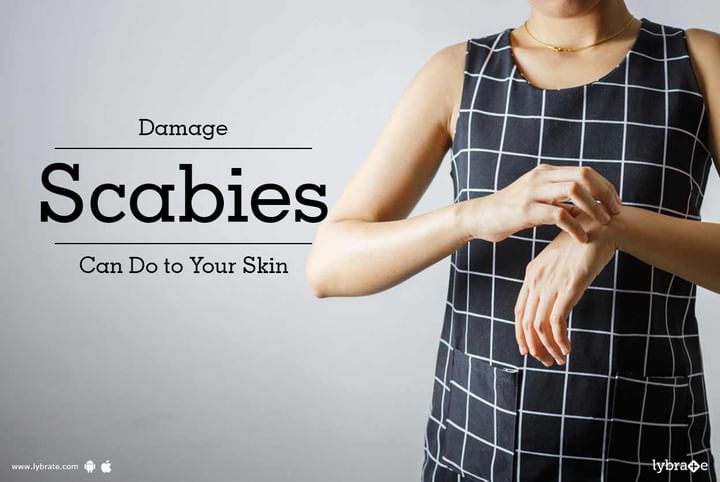Damage Scabies Can Do to Your Skin
Scabies is a type of a skin condition that is characterized by itching and rashes. This dermatological condition is caused by sarcoptes scabiei, a type of microscopic mite. A contagious condition, scabies spreads through physical contact. It usually transmits through clothes, towels, sexual contact and other such ways.
Symptoms: Some of the symptoms of the conditions are severe itching, narrow irregular burrow tracks, which look like blisters or bumps on your skin. The burrow tracks generally appear in the folds of the skin. The common sites of the condition are between the fingers, armpits, around the waist, soles of your feet, knees, shoulder blades etc.
Complications: Some of the complications of the condition are:
- Severe scratching can lead to damaged and reddened skin, which in severe cases can start to bleed.
- Vigorous scratching, which can break your skin and can cause a secondary infection such as impetigo. This superficial skin infection is usually caused by the staphylococci bacteria.
- Crusted scabies, the most severe form of scabies, can be common in certain groups. People suffering from diseases such as HIV or leukemia who have weakened immune systems as well as severely ill people have high risks of contracting this condition. This condition, also known as Norwegian scabies, is very contagious and also hard to cure.
Some of the risk factors of scabies are:
- An infected person can easily pass scabies to his/her household or sexual partners. Scabies in adults is usually sexually acquired.
- The likelihood of scabies increases easily under crowded conditions, which involve close body and skin contact. Nursing homes, prisons, and several types of care facilities are sites of scabies outbreaks.
- Scabies spreads through direct, prolonged skin-to-skin contact with a person who has mites.
- Immunocompromised, elderly and disabled people also suffer from an increased likelihood of contracting this skin condition. If you wish to discuss about any specific problem, you can consult a dermatologist.



+1.svg)
